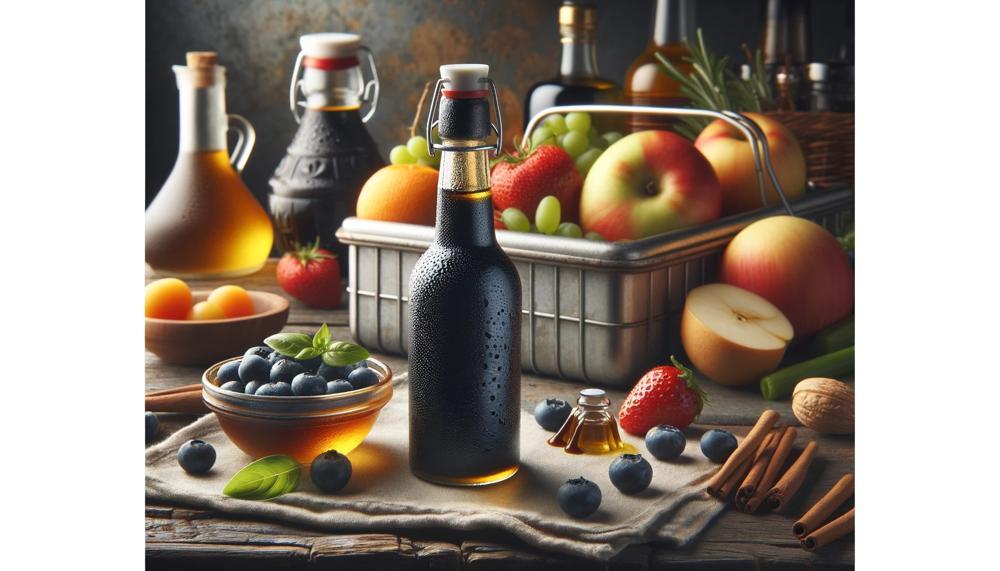Here’s a surprising fact: balsamic vinegar does not need to be refrigerated. Yes, you read that right! Refrigeration is not necessary for storing balsamic vinegar.
In fact, it can even dilute the flavor of this beloved condiment. So, where should you store your balsamic vinegar to keep it fresh and flavorful? Let’s find out.
Although it is not necessary to refrigerate balsamic vinegar, some individuals discover that salad dressing tastes better when it is chilled. For many pantry staples, however, refrigeration is necessary after opening, and refrigeration might result in condensation forming on the bottle’s inside, which can weaken the taste. For optimal results, keep balsamic vinegar at room temperature, since this is the recommended temperature for tasting it.
Balsamic vinegar keeps best at room temperature in a dark, dry location like a pantry or dark cabinet. By doing this, you may stop germs from growing and keep the vinegar at its best. Additionally, it’s a good idea to store balsamic vinegar out of direct sunshine and heat sources.
You may keep it in the refrigerator if you mostly use it to prepare salads and you want your dressing to have cold components. Put them in a cupboard if you want to use them for reductions, marinades, and sauces. Balsamic vinegar should have a three to five year shelf life.
Contents
Key Takeaways:
- Balsamic vinegar does not need to be refrigerated and can be stored in a cool, dark place.
- Refrigeration may dilute the flavor of balsamic vinegar.
- Proper storage helps maintain the quality and flavor of balsamic vinegar for an extended period of time.
How to Store Balsamic Vinegar
Storing balsamic vinegar right keeps its quality and taste. Here’s how to keep your balsamic vinegar great:
Find a Cool and Dark Place
Keep balsamic vinegar in a cool, dark spot like a pantry. A stable temperature keeps its taste. Don’t let it near light or heat to prevent spoiling. Keep it off windowsills and away from stoves.
Securely Fasten the Cap
Make sure the bottle’s cap is tight to block dust and debris. A good seal also keeps moisture and air out, protecting the vinegar.
Avoid Cabinets with Ambient Heat
Steer clear of cabinets that get warm, like those near machines or pipes. A steady, cool temperature is best for the vinegar. Pick a spot that’s always cool and shaded.
Keep Away from Strong Flavors
The delicate taste of balsamic vinegar can change near strong smells. Keep it far from things like onions, garlic, and spices.
“Properly storing balsamic vinegar in a cool and dark place with a securely fastened cap ensures its longevity and flavor.” – Expert
Follow these tips to make your balsamic vinegar last longer and keep its tasty flavor.
| Storage Guidelines for Balsamic Vinegar |
|---|
| Store in a cool, dark place |
| Securely fasten the cap |
| Avoid cabinets with ambient heat |
| Keep away from strong flavors |
Shelf Life of Balsamic Vinegar
When stored right, raw balsamic vinegar can keep for three to five years. Its high acidity makes it resistant to bacterial growth and extends its shelf life. Still, bad storage can cut its life short and lead to contamination. Be sure to read the label. Make sure you buy a 100 percent vinegar product without any added ingredients.
How to Tell If Balsamic Vinegar Has Gone Bad

It’s not common, but balsamic vinegar can spoil. This happens if it’s not kept right or has extra ingredients. To find out if yours is bad, look at its appearance, texture, smell, and taste.
Start with the appearance. Look for color changes, cloudiness, or sediment. These might mean the vinegar is beginning to spoil.
Then, check the texture. It should be smooth, like syrup. If it’s thick or slimy, it might be bad.
Smell the vinegar. It should have a rich, sweet, and tangy smell. An off smell means it could be spoiled.
Lastly, taste it. Good balsamic vinegar tastes sweet and tangy. If it tastes off, throw it away.
Even with signs of going bad, the vinegar might still be okay to use. You can try to strain out solids. But if you see or taste something wrong, it’s safer not to use it in your dishes.
Choosing and Buying Balsamic Vinegar
When choosing balsamic vinegar, it’s key to go for a high-quality bottle. This ensures a great tasting experience. Quality bottles start at around $15. Look for IGP (aged at least 60 days) or Traditional DOP (aged 12 years) labels. These show the vinegar meets high standards.
It’s also important to check the ingredient list when buying. Some vinegars are mixed with other stuff, which changes the taste and shelf life. Make sure your vinegar is 100% balsamic, with no additives.
Best Storage Practices for Balsamic Vinegar
Storing balsamic vinegar right is key to keeping its taste and lasting longer. It’s best kept in a cool, dark spot away from strong scents. This helps keep its flavor and quality over time.
Keep balsamic vinegar in a pantry or cabinet where it’s cool and dark. Cool places keep the vinegar good by stopping flavor loss. A dark spot keeps the light away, preventing flavor and color changes.
Storing balsamic vinegar properly is crucial for its flavor and quality. A cool, dark place keeps its taste and stops damage from strong smells.
If you like your balsamic vinegar cold for salads, you might put it in the fridge. But, be careful as it might make water inside the bottle. This can weaken the flavor. Think about how you plan to use it when choosing where to store.
Fridge storage for balsamic vinegar is an option, but not a must. If you prefer it cold, go ahead. Just remember, it might affect the taste due to condensation.
These storage tips can help keep your balsamic vinegar tasty and high-quality for longer.
Storage Recommendations for Balsamic Vinegar
| Storage Method | Pros | Cons |
|---|---|---|
| Cool, dark place | – Preserves flavor – Protects from light exposure |
– None |
| Refrigerator | – Chilled vinegar option | – Potential dilution due to condensation |
Conclusion
Balsamic vinegar is a tasty addition to many meals. It’s easy to store too. Just keep it in a cool, dark place like a pantry. This helps keep its flavor good for three to five years.
It’s easy to tell if balsamic vinegar is bad. Look for signs like cloudiness or a strange smell. If it smells off or tastes harsh, it’s time to throw it away.
When buying balsamic vinegar, pick a quality one. Labels like IGP or Traditional DOP mean it’s authentic. Also, check the ingredients to make sure it’s not mixed with other stuff. This helps it last longer.
By storing it right, your balsamic vinegar will stay tasty for years. It adds deep flavor to your food, making meals special. Enjoy its rich taste in your cooking!
Source Links
- https://www.marthastewart.com/8039222/how-long-balsamic-vinegar-lasts
- https://brightland.co/blogs/field-notes/how-to-store-balsamic-vinegar




